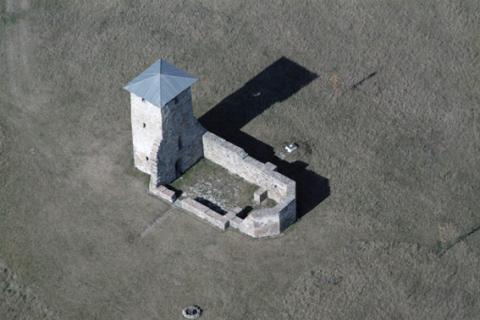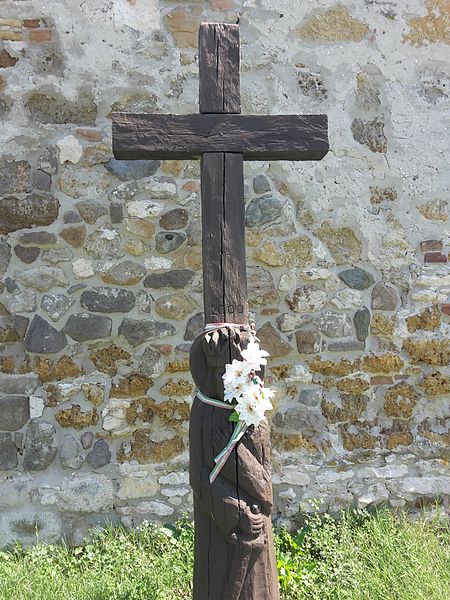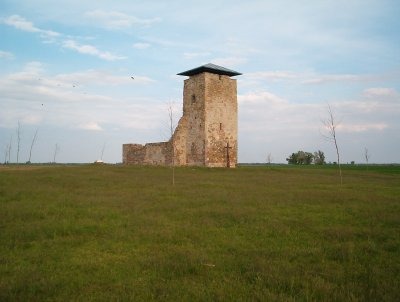Csonkatorony

Facts and practical information
The Csonka Tower is a church ruin on the border of Soltszentimre and Csengőd, an Árpád-era monument, although the exact date of its construction is unknown. The area was inhabited already during the time of the conquest. The central part of the Danube-Tisza area was a princely and later a royal estate, which can be found in the name of the surrounding settlements. The foundation of the church was probably built in the 11th century. The church was built in Romanesque style with thick lancet windows. There is no evidence of buttresses or of any wall splitting.
The church is east-west oriented, with a single nave and a south-facing doorway. No carved or decorated stones have been found. According to local legend, the temple will remain standing as long as this carved stone is in place. The nave is 12,80 m long and 6,30 m wide. The sanctuary is 4,8 m wide. The tower is 2,60 × 2,80 m, 10,6 m high, and was once 4 storeys high. The building material is predominantly meadow limestone, but it also contains volcanic rocks transported from further afield. Mortar was used as a binding material, in which finely crushed burnt lime was fused. The outer wall was also covered with plaster, part of which is still visible today. After the Battle of Mohács, the Turks took control of the area between the Danube and the Tisza, and the settlement was destroyed, along with the other 900 villages in the lowlands. Thus the church was left alone in the desert.
Already in the 1860s, excavations around the ruin were carried out with the intervention of the then owner of the area, Sándor Blaskovits and his family. They found copper rings, Roman coins, urns, ornaments, swords and decorations from the Anjou period. The artefacts were deposited in the antiquities library of the high school in Kishunhalas and in the Hungarian National Museum. Unfortunately, the antiquities library was destroyed during the Second World War. Between 1920 and 1931, four more excavations were carried out. No documentation of these excavations has survived, only a few photographs. The excavations were also reported in contemporary newspapers, such as Magyarság, Új Barázda and the Catholic supplement of the National Newspaper. Bone remains and fragments of pottery were found in the vineyards around the Csonka Tower, but no one attached any importance to them, so unfortunately these finds were lost.
By the 1920s, the ruin had fallen into disrepair, with a hole in the north side, and needed to be restored. Lajos Vorák, the parish priest at the time, was the main advocate for the preservation of the ruin. Even in the year of St. Imre 1930, it was not possible to raise enough money for the works. Around this time, the idea of demolishing the church and rebuilding it in the village in its original state was mooted, as the village did not have a church at that time, but neither the monument protection authorities allowed it nor was there enough money, so the church ruins remained in place. After thirty years of correspondence and collecting, the work was finally completed only in 1961, based on plans by Ferenc Erdei. By the turn of the millennium, the building was in need of renovation again. Not only time but also careless people had left their mark on the much-seen walls. In 2000, the year of the Millennium, the church was again renovated. The steeple was given a metal canopy, which may not be the most aesthetic, but it protects the centuries-old walls from the increasingly aggressive rains.
Csonkatorony – popular in the area (distance from the attraction)
Nearby attractions include: Kiskunság National Park.






